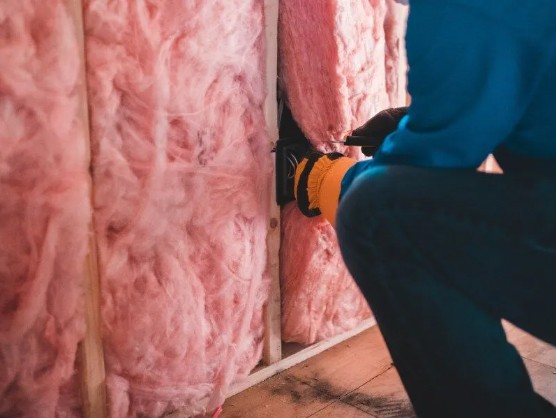An insulated garage door keeps the home cool in the summer and warm in the winter while also helping to reduce noise. As a result, it can improve the overall comfort of your garage space. Picking the right type can really affect how well it works. This article offers an overview of the different types of insulated garage doors and their layers and discusses the meaning of R-value.
What is the R-value?
The R-value of a garage door shows how well a material resists heat transfer. It is a numerical rating used to compare different materials’ thermal resistance. The higher the R-value of the garage door, the better the insulating properties, which means improved energy efficiency and better temperature control. For instance, a material with an R-value of 10 is ten times more resistant to heat transfer than a material with an R-value of 1.
This value is the main element to determine the ideal insulation choice but is not the only factor worth considering. Location, weather, and garage door usage are all significant factors to keep in mind.
Garage Door Layers
Unsurprisingly, the more layers a garage door boasts, the better its insulation. However, adding more layers increases the door’s weight and complexity.
Single-layer doors are the simplest option and typically consist of just one layer of steel. They include no insulation and are the only barrier between the garage and the outside world.
Two-layer doors have a base panel and an insulation layer secured by steel backings, providing more R-value to protect the garage from the elements better.
Three-layer doors feature thick insulation between two steel layers for the highest R-value, energy efficiency, and durability.
Types of Garage Door Insulation
Garage door insulation comes in three main types according to their construction:
Vinyl-Back Garage Doors
Vinyl-back insulated garage doors are one of the most affordable options available. This type has polystyrene insulation between two layers. A sturdy material that looks like thick wallpaper covers the layer facing the inside of the garage.
The primary benefit of vinyl-back garage doors is that they are relatively inexpensive and lightweight. They are simple to install and need very little upkeep. However, vinyl-back doors are less durable than other options. They can become brittle over time and provide less insulation than the pricier varieties.
Steel Back Insulated Garage Doors
Steel back insulated garage doors are a more durable option. Steel back insulation is like vinyl-back insulation with an added layer of steel between the garage and the insulation. This layer covers the polystyrene insulation on the side of the door facing the inside of the garage.
The steel provides excellent durability and can withstand considerable temperature fluctuations. These doors are also still relatively lightweight. However, steel back doors are less common than vinyl ones due to their higher cost and more complicated installation process.
Steelback Polyurethane Garage Doors
Steelback polyurethane insulated garage door panels are the most durable and energy-efficient option. These doors have polyurethane insulation instead of polystyrene. As a liquid, the polyurethane expands and fills all the spaces inside the door. It then hardens and bonds to all surfaces.
Steelback polyurethane insulation has an R-value between 18 and 19, the highest of the three types. While this insulation type provides substantial long-term energy savings, these doors are heavy and cost more to install.
Troubleshooting Tips for Insulated Garage Doors

If you’re having trouble with your insulated garage door panels, it’s important to identify the issue early to prevent further damage or inefficiency. Here are four common problems and easy fixes to keep your door functioning smoothly:
- Door Not Closing Properly: Check for any obstructions in the tracks or misaligned sensors, as they can prevent the door from closing fully. Proper garage door installation can also ensure that seals and insulation are correctly fitted from the start.
- Excessive Noise: If your door is making noise, it could be due to worn-out rollers or hinges. Apply lubricant to moving parts or replace worn-out components to minimize noise.
- Cold Air Leaks: Inspect the weather stripping around your home garage door. Over time, it can deteriorate, causing drafts and less effective insulation.
- Door Sticking or Moving Unevenly: If your door isn’t moving smoothly, it might be due to misaligned tracks or an issue with the springs. Consider contacting a professional to fix this.
Choose The Right Door
Insulated garage doors provide an excellent way to keep the temperature in the garage consistent and reduce noise. You should take the layers and R-value into account. Also, regular garage door maintenance keeps it working well and lasting longer. This will help in choosing the best door for one’s needs. Contact local garage door professionals to explore the options available and get a quote that meets one’s budget.
Contact Quick Response Garage Door Service today for expert garage door solutions in Arizona.
Greater Phoenix Area (623) 624-9043

